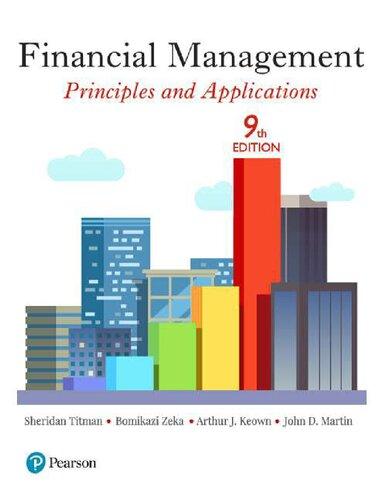e. borrowing? What will the value of the firm be after this ad ditional borrowing? (with zero growth? with 2% growth in perpetuity) 13. Pfizer, one of the largest pharmaceutical companies in the United States, is considering what its debt capacity is. In March 1995, Pfizer had an outstanding market value of equity of $24.27 billion, debt of $2.8 billion, and an AAA rating. Its beta was 1.47, and it faced a marginal corporate tax rate of 40%. The Treasury bond rate at the time of the analysis was 6.50% and AAA bonds trade at a spread of 0.30% over the Treasury rate. a. Estimate the current cost of capital for Pfizer. b. It is estimated that Pfizer will have a BBB rating if it moves to a 30% debt ratio and that BBB bonds have a spread of 2% over the Treasury rate. Estimate the cost of capital if Pfizer moves to its optimal. c. Assuming a constant growth rate of 6% in the firm value, how much will firm value change if Pfizer moves its optimal? What will the effect be on the stock price? d. Pfizer has considerable R&D expenses. Will this fact affect whether Pfizer takes on the additional debt? 14. Upjohn, another major pharmaceutical company, is also considering whether it should borrow more. It has $664 S Pg. 389 W e. borrowing? What will the value of the firm be after this ad ditional borrowing? (with zero growth? with 2% growth in perpetuity) 13. Pfizer, one of the largest pharmaceutical companies in the United States, is considering what its debt capacity is. In March 1995, Pfizer had an outstanding market value of equity of $24.27 billion, debt of $2.8 billion, and an AAA rating. Its beta was 1.47, and it faced a marginal corporate tax rate of 40%. The Treasury bond rate at the time of the analysis was 6.50% and AAA bonds trade at a spread of 0.30% over the Treasury rate. a. Estimate the current cost of capital for Pfizer. b. It is estimated that Pfizer will have a BBB rating if it moves to a 30% debt ratio and that BBB bonds have a spread of 2% over the Treasury rate. Estimate the cost of capital if Pfizer moves to its optimal. c. Assuming a constant growth rate of 6% in the firm value, how much will firm value change if Pfizer moves its optimal? What will the effect be on the stock price? d. Pfizer has considerable R&D expenses. Will this fact affect whether Pfizer takes on the additional debt? 14. Upjohn, another major pharmaceutical company, is also considering whether it should borrow more. It has $664 S Pg. 389 W







